Rewire Pt. 6: Reconfiguring Work
Figuring Out How to Make Work Conform to My Life(style) and Not the Other Way Around
One of the most important challenges in trying to reorder the priorities of one’s life is figuring out how to reconfigure how you make a living. The question is not so much changing what you do, but changing how you deliver it and to whom. For many people, I suppose, this isn’t an option. An electrician needs to go where the electricity needs to be. A secretary needs an office. A bus driver needs a bus. But for many, reconfiguring delivery is doable. Herein lies a case history.
Getting Back in the Saddle: Your Basic 7-7 Job
My trek from the normal really began in early 2005 when I reentered the “normal” world, becoming the COO of Snap.com, a next generation search engine and advertising platform owned by Idealab. Snap was my first “job” in quite some time. For the ten years prior, I had been an entrepreneur in one fashion or another.
For the next 2 1/2 years I went into Snap’s office for 12 hours a day and usually part of the weekends. The work was great fun and challenging as we were building something difficult and potentially important. After a while, though, I began asking myself, why am I doing this? It wasn’t the long hours of hard work that bothered me as I’ve always been a workaholic, nor was it the nature of the work. Rather, it was the lack of flexibility in doing the work. My daily agenda was set by my boss or the umpteen meetings that I took every day. I found it difficult, if not impossible, to pursue the things that I really cared about. I just didn’t have the time or energy to do what I wanted after I came home in the evenings.
I started to think about taking back control. Could I make a living in a more flexible manner? What I was good at and who would be interested in it?. My answer boiled down to the same thing: I’m good at building things: teams, groups, companies, products. I like the process of creating and getting people working together.
Couldn’t I do this in a way that gave me more control and freedom? I didn’t know, but I was willing to find out.
Taking Back Control
In the Spring of 2007 I resigned from Snap and in September of that year co-founded The Propellant Group with two other C-level entrepreneurs. Our mission was simple: help early stage companies grow and succeed. From the very beginning, we built TPG to be flexible, low-cost and high-impact:
- Simplification to the extreme: TPG has three elements: Clients, Partners and our Work. That’s it. Everything else either gets in the way or takes money away from profits. We didn’t really need much accounting or legal support either. From revenue, we subtracted a few costs, set aside a little money for future expenses, and divided the rest by three and made out three checks.
- No offices: We decided early on that TPG would operate out of our individual houses. No formal offices which means… no personal lease commitment, no extra overhead, no furniture, no maintenance, no…. ANYTHING! We thought this would be a big problem for clients. It wasn’t, our clients seemed to embrace the idea that quality doesn’t necessarily only come from big and structured. Especially for our clients.
- No infrastructure: We had a bank account and that was it. No stationery, no copy machine, and no administrative assistants. No hard lines and no faxes. We each had a cell phone, access to the Internet, and business cards.
This took a little getting use to, even for three guys who had built companies from scratch. We had to jettison our belief that self-worth and potential impact were tied to nice offices and a recognized name. We had to go down the stairs, or across the hall, or sit at the dining room table and do the work even if we were in our jammies. We needed to feel confident in meeting prospective clients at the Coffee Bean and Tea Leaf and not let it bother us. This isn’t for everyone. Over the past three years, TPG has gone through a number of partners partly because the unstructured nature of the business was uncomfortable.
My work regimen changed over night. The first thing one notices is that the 2 hours each day lost in commuting is re-found. So, immediately my 12 hour day is down to 10. Next is time lost in frivolous meetings and around-the-office meandering and stuff: probably another four hours. Now we’re down to six hours without a noticeable impact on productivity. And that folks is the payoff: work 1/2 the time, accomplish the same output, and gain a life-changing amount of control in your life.
For Adults Only
There are significant downsides to my configuration, as one might expect. Downside #1: there are no viable excuses for not getting something done. The dog ate the homework doesn’t cut it. Sometimes you just have to put your head down and get it done, no matter what else is going on. Downside #2: There are always lots of other things going on:) Distractions can be well…. distracting. Downside #3: You have to get use to working anywhere, and I mean anywhere. Boat, plane, motorcycle, Starbucks, on the side of the road, at the kitchen table, at the client’s office, at a restaurant, or wherever. This is where most people get confused: this isn’t a vacation, its a different way of organizing one’s life. And work is and will be the engine that drives it.
The Cost and Value of Flexibility
Here’s the bottom line audit of this move: my income has gone down about 45%, the amount of time I devote to work has gone down about about 50%, and the amount of flexibility in my life is up 1000%. As a result, the last three years have been some of the happiest of my life. I wouldn’t (and won’t) change a thing.
How Far Can “It” Be Pushed?
My quest is to be able to make a living while “on the road” for long periods of time. So, here’s what I’m going to try: (1) Continue to live in Los Angeles (in Steve and Rita’s basement just as long as they will put up with me) as a my homebase; (2) Work while we take a motorcycle trip through South America; and (3) Work from Los Angeles and our Mexican headquarters in Puerto Vallarta upon return. Repeat sequence as often as possible.
Will this work? I have no idea. I’ll keep you posted.
Transition to a Working Nomad…
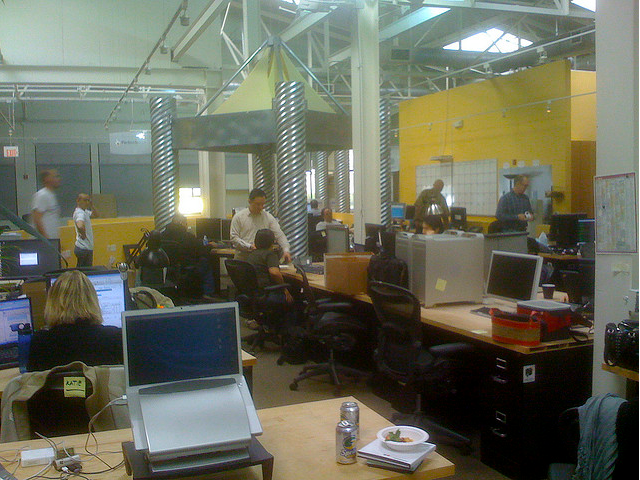
Last of the Mohigans? Office at the Idealab, an incubator of tech company startups. Snap was housed in this office.

TPG has thousands of branch offices worldwide. My vote for best company on earth is Starbucks. Now with free Wi-Fi. It doesn't get any better than this.
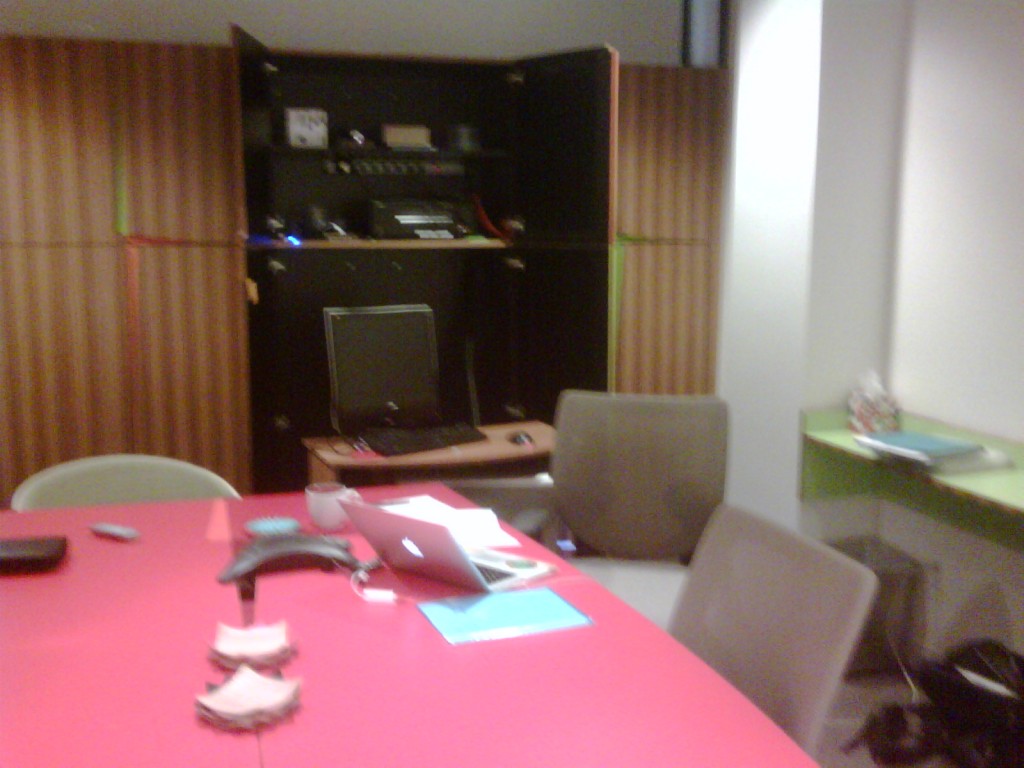
Having clients that worry about the product, not the package is a good thing. Here's my "office" in a conference room at United States Artists
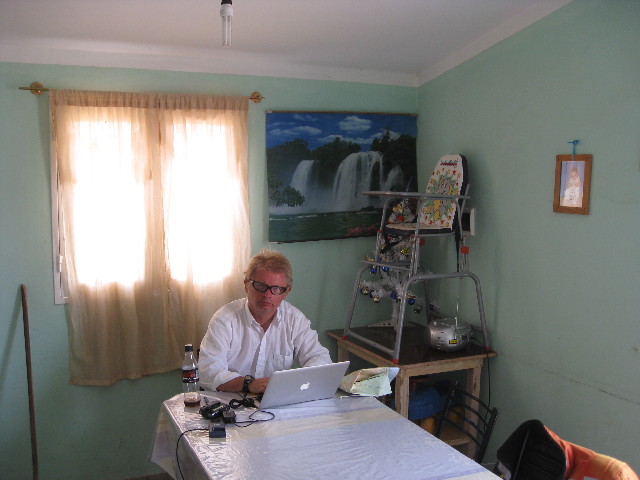
Working at the kitchen table in a house in Fiambala, Argentina. The kitchen also served as dining room, living room and den:)
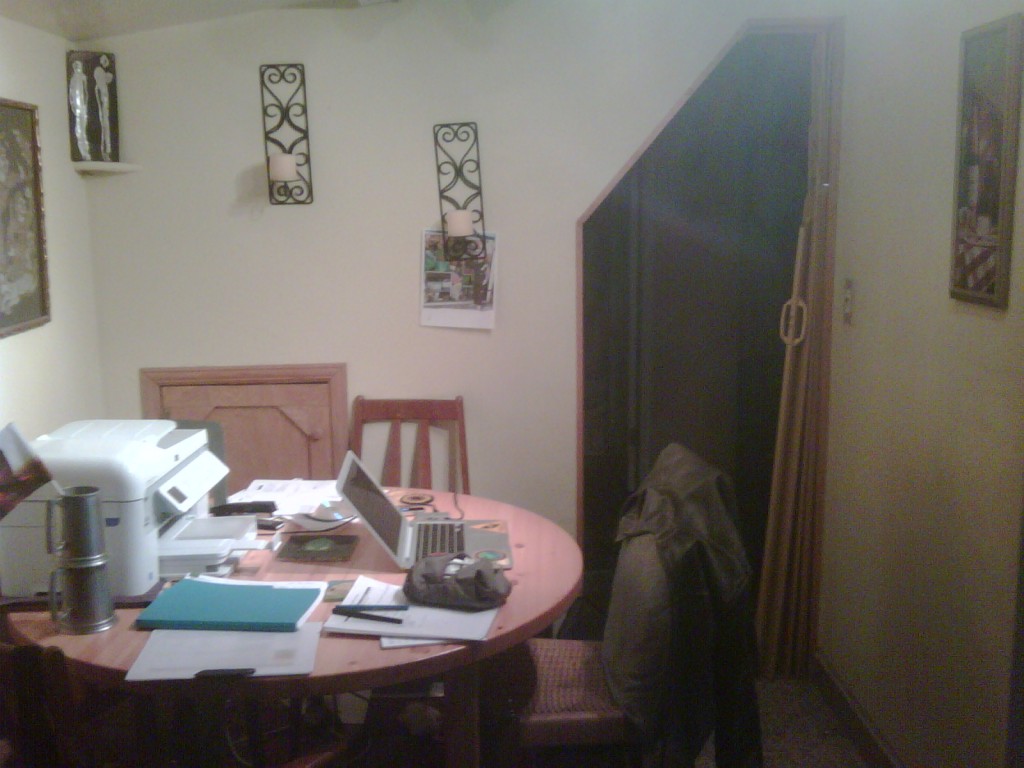
Basement Beauty. Current offce in the basement of Steve and Rita's. I've spent a lot of good times on the keyboards right here.

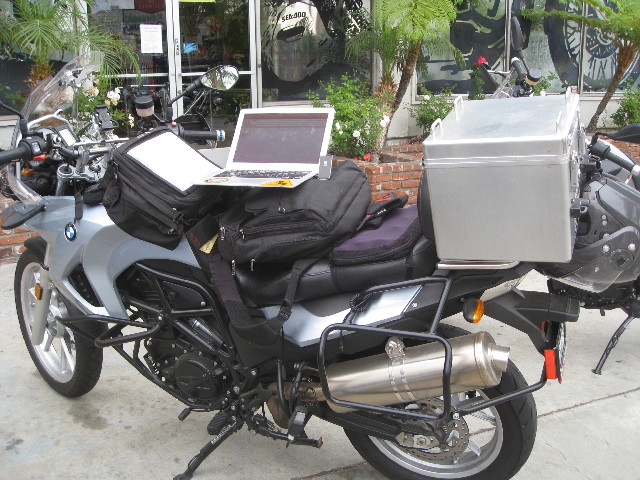
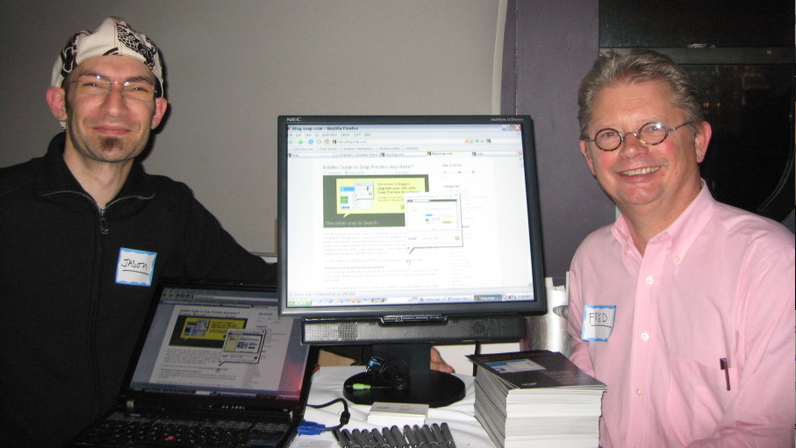

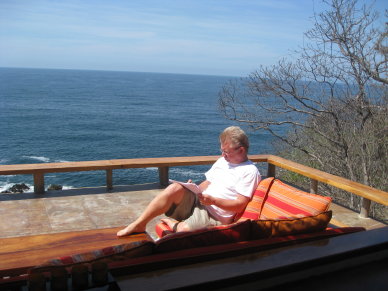
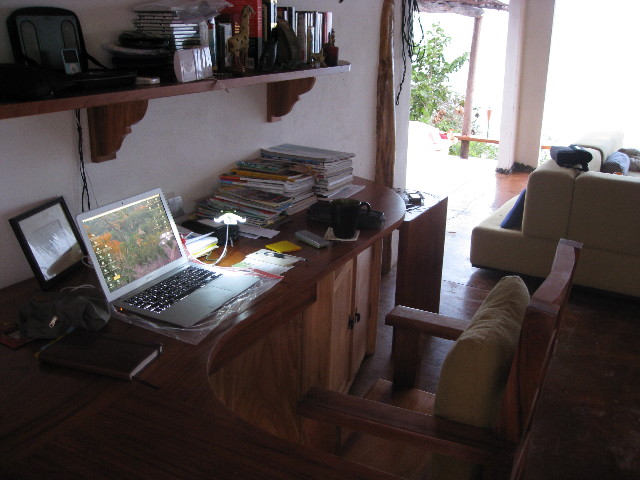
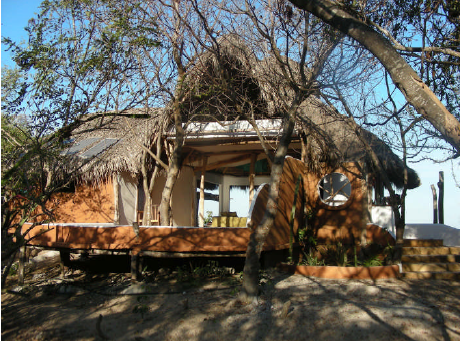
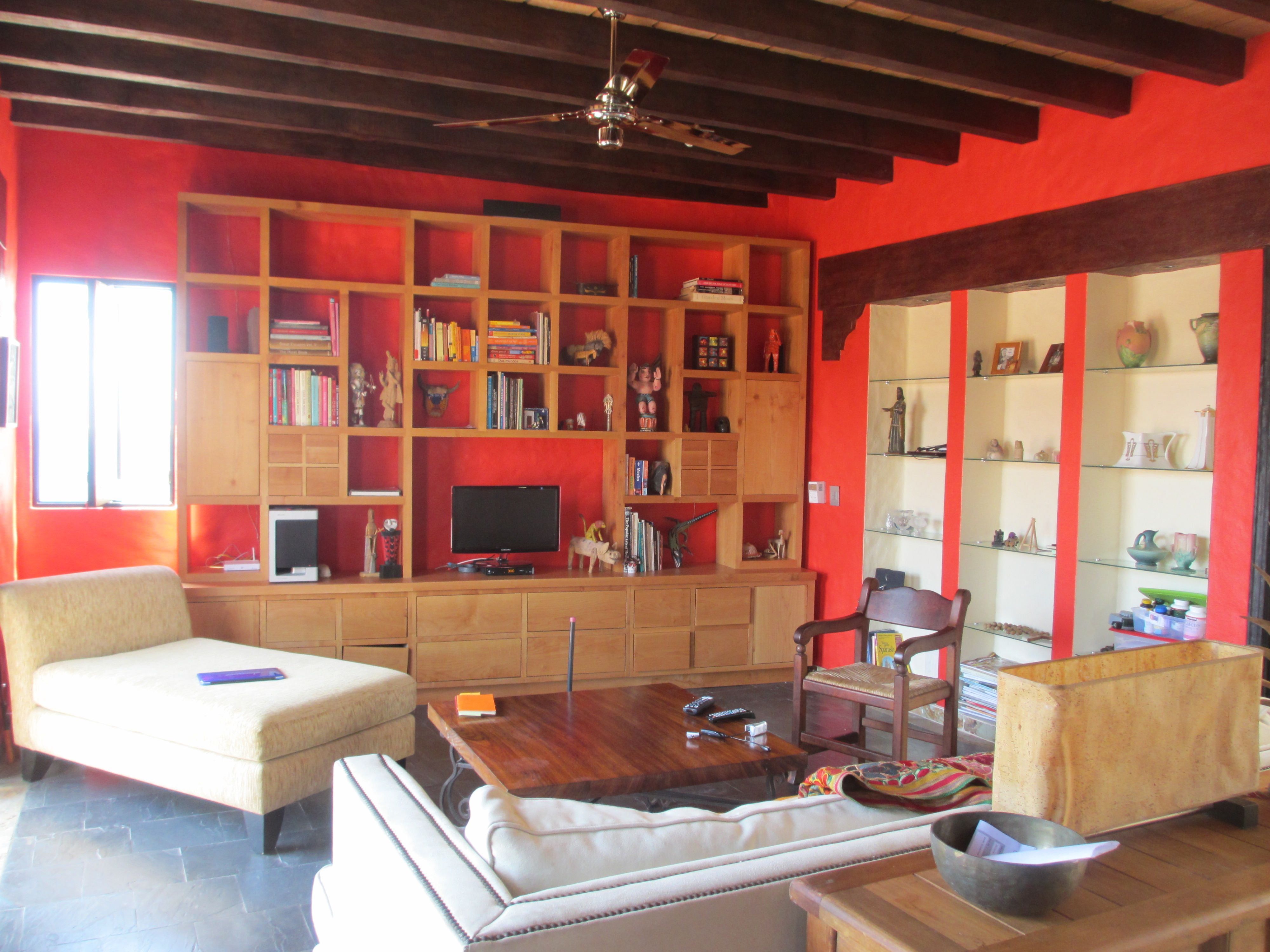
Leave a Reply
Want to join the discussion?Feel free to contribute!